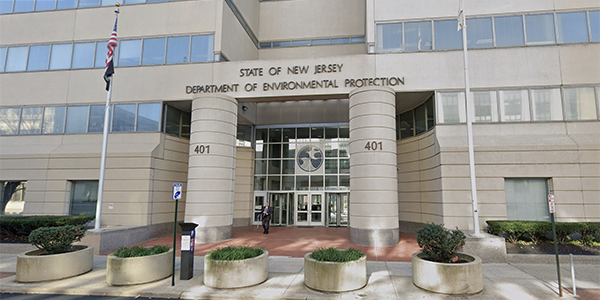
17 Apr The State of New Jersey’s Environmental Services Market
Reading Time: 4 minutesOur topic of discussion this month centers on how the current economy and recent New Jersey regulatory changes may be affecting the timelines and costs of environmental compliance in New Jersey.
The New Jersey Department of Environmental Protection (NJDEP) is one of the country’s most dynamic and powerful state environmental agencies, and they frequently modify how they administer their organization through regulatory updates. By virtue of ESA’s project workload, we have the ability to see firsthand how some of the NJDEP’s most recent changes could impact the environmental compliance process; namely, NJDEP response times may increase, causing an associated increase in the duration of more complex compliance projects. Project duration is always critical for developers because, as we all know, time is money.
The Slowdown Begins
During and immediately following the pandemic, updates to the Site Remediation Program (SRP) enacted in 2020 and 2021 did not significantly impact an environmental consultant’s ability to execute their work. However, ESA began to see a lag in regulatory review times at the end of 2021. We attribute this delay to the retirement of many long-term, highly experienced SRP professionals and an increased SRP project workload resulting from favorable real estate market conditions. Unfortunately, ESA believes that additional NJDEP delays may be coming as a result of these circumstances. Moreover, there are recent changes to New Jersey’s environmental regulations that may continue to slow the environmental compliance process.
What’s the Holdup?
Site Remediation Program & Permitting
In order for a Licensed Site Remediation Professional (LSRP) to close an open case with contamination remaining on site, the LSRP may issue a restricted use Response Action Outcome (RAO) letter with Permit Requirements. Those Permit Requirements will be set forth in an NJDEP-approved Soil Remedial Action Permit (S-RAP) or a Groundwater Remedial Action Permit (GW-RAP). The RAP process allows case closure with limitations, and it has been used by developers and real estate investors with great success. However, we have recently seen increased delays in the approval of permit applications due to slower NJDEP review. This directly delays the issuance of each RAO.
ESA’S ADVICE: If your site needs an NJDEP-issued S-RAP or GW-RAP, expect a minimum of six months for permit review time. Highly complex sites requiring these permits may languish for a year or more. Some delays are a result of work not being conducted in strict accordance with the regulations. Specifically, NJDEP often rejects permits for insufficient contaminant delineation and improper institutional and/or engineering controls. Ironically, the degree of delineation that may be acceptable in the Remedial Investigation (RI) stage is often unacceptable in the Remedial Action (RA) Stage. NJDEP Policy specifically states:
“If the remedial investigation does not include actual clean zone sampling data to demonstrate contaminant delineation to the applicable remediation standards and screening criteria, such sampling data are required to demonstrate attainment of the applicable remediation standards at the conclusion of the remedial action and prior to the Department issuing a remedial action permit, if applicable, and issuance of the Response Action Outcome (RAO). Thus, if your site did not use single point compliance or compliance averaging during the Remedial Investigation for delineation, it needed to do so prior to completion of the Remedial Action. And if it did not, Remedial Action Permits won’t be issued.“
If your consultant believes that your site is complex, it may be wise to retain an attorney to strategize. You want to be certain to choose the compliance path that achieves the remedial goals for planned future use of the property and will most likely be acceptable to NJDEP.
Per- and Polyfluoroalkyl Substances (PFAS) as Hazardous Substances
The regulatory issues surrounding PFAS are not going away. The U.S. Environmental Protection Agency (EPA) will likely add PFAS to the list of hazardous substances in 2023, as proposed in 2022. Additionally, the State of New Jersey has already established standards for some PFAS compounds in soil, groundwater, and drinking water. Those with remedial projects must understand how the presence of PFAS affects transactions, development, people working at the site, and insurance. The State of New Jersey adopted remedial standards and criteria for PFAS in soil and groundwater that are more stringent than EPA standards. All in all, PFAS has made the due diligence and remediation process longer and more costly, and, unfortunately, it adds a frustrating degree of uncertainty. Once the EPA designates PFAS compounds as hazardous substances, they will have full authority to require investigation and cleanup under RCRA and will be able to seek cost recovery from responsible parties.
ESA’S ADVICE: If your site has (or may have) PFAS, expect delays and added costs. During the due diligence process, it is critical for your environmental consultant to determine if your site ever had a potential source of PFAS on site. If PFAS concentrations are identified at your site and a potential source of contamination is not identified, ESA suggests that an investigation of potential off-site sources be conducted to demonstrate that PFAS contamination is migrating onto your site and is the responsibility of others. Ultimately, both seller and buyer may opt to engage their legal teams to review the situation.
Plan for Speed. Expect Delays. Hope for Balance.
Just as we braced for a slowdown in the last couple of quarters due to rising interest rates, we may need to brace for a slowdown in development caused by delays within the NJDEP as they struggle to keep up with their workload and the ever-increasing burden as new contaminants of concern are added to the roster. While we continue to ride these waves of change, we hope to see new NJDEP staff added. This will help with review time and permit approvals. Until that happens, the NJDEP must address complaints from dissatisfied LSRPs and frustrated property owners who are beginning to realize that today’s NJDEP is starting to look like the NJDEP as it existed prior to the Site Remediation Reform Act of 2009. And that’s not a good thing.



